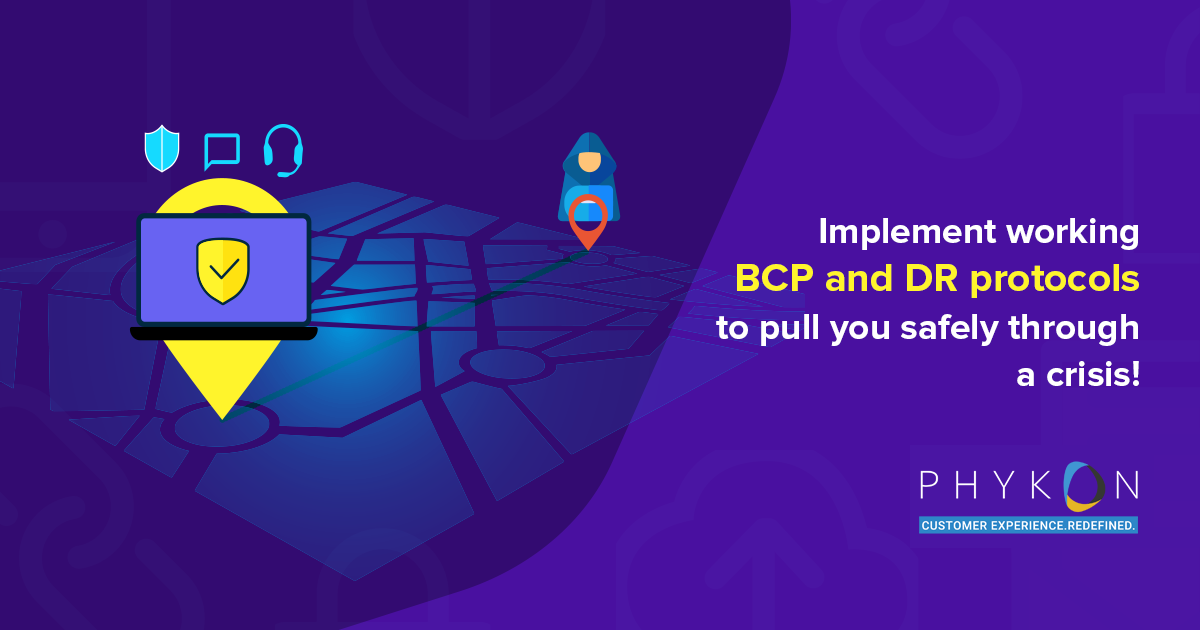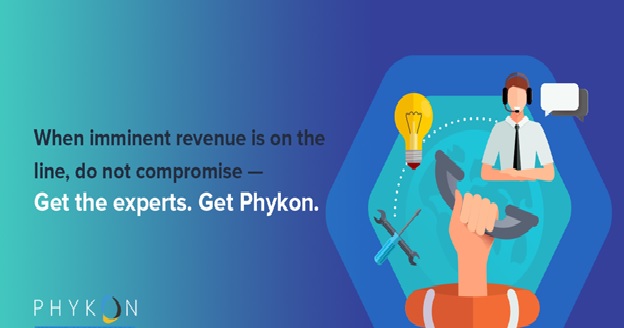Business Continuity Plan and Disaster Recovery
Disruptive events can strike at any moment and may vary in degree from minor to catastrophic. Businesses worldwide work hard to ensure continuity of business even during adverse times. Slower recovery from these unplanned disruptions will potentially impact both your revenue and brand reputation. On the other hand, robust Business Continuity and Disaster Recovery protocols ensure it is business as usual during a crisis. A resilient contingency plan can provide you with better emergency management and the ability to bounce back quickly.
The challenge is readiness. And to meet this challenge you can utilise Phykon solutions that use comprehensive monitoring and automated recovery workflows.
But first let us have a look at these terms more closely.
Business Continuity Plan And Disaster Recovery: Understanding The Difference
Business Continuity Plan and Disaster Recovery often go hand in hand but they are not the same. Both BCP and DR indicate a business’s preparedness to disasters. A comprehensive Business Continuity Plan will have an in-built DR plan in it. In short, DR is a subset of BCP.
BCP: It refers to a plan of action designed to ensure continuity of business operations even during disruptive events. BCP aims to keep a business up and running during unprecedented events or to recover immediately after the event. It is a survival strategy and works to minimize the impact of disruptions on businesses. BCP takes the whole business or business functions into consideration. But it can drill down to specific areas that pose a serious threat to the normal functioning of business operations. For example, Phykon solutions for contingencies focus on critical business data and functions that are necessary to keep businesses up and running during disruptive events. BCP improves the disaster preparedness of your organization. It involves prevention, mitigation, and recovery. That is, it consists of steps to prevent the occurrence of certain disasters. Processes to mitigate the impact of disasters. Protocols to limit downtime and recover data or restore operations as quickly as possible.
DR: A disaster recovery plan focuses on recovering from a disruptive event. A DR plan can be considered as the response component of your Business Continuity Plan. Disaster Recovery through Phykon solutions includes specific steps or actions to be taken for getting an organization back on its feet after a disaster. It encompasses all the procedures necessary for quick recovery after a disruptive event. It contains strategies to recover data, network outages, failure of applications/ hardware equipment or any other point of failure.
Major Business Continuity Threats
There are a wide variety of threats that can impede an organization’s ability to function. It can be natural disasters like floods, earthquakes, fires, or hurricanes; or, man-made threats like industrial sabotage, equipment failures, cyberattacks or even pandemics.
- Natural disasters: Natural disasters may be weather-related like tornados, hurricanes, tsunamis, or other natural phenomena like earthquakes, volcanic eruptions, or wildfires. Many of these are difficult to predict and can onset in seconds. The effects of natural disasters on commerce expand much further than the physical damage caused by the event.
- Global pandemics: Virtually every business firm is connected to or dependent on others in some or the other way. You may not be directly affected by a pandemic. But it can have a negative impact on your business if a vendor in your supply chain is affected. Pandemics force employees to work from remote environments. There will be an increase in demand for certain items but manufacturer shutdowns may decrease the supply.
- Power outages: Failure of equipment, fault in communication lines, and other network issues can disrupt day-to-day business operations. Damage to physical assets can affect the continuity of your business.
- Security threats: Cyberattacks on technical assets like data theft, ransomware attacks, DDoS, SQL injections, etc. can hinder your business operation. You may lose critical business data if you don’t have an efficient data backup. Malicious software can make your business data unreadable or inaccessible.
Two Important Factors To Consider While Preparing a Disaster Recovery Plan
Some disasters cannot be prevented or mitigated. In such scenarios, a disaster recovery plan will guide you to bounce back from the worst disruptions with minimal damage. Recovery Point Objective (RPO) and Recovery Time Objective (RTO) will help you determine efficient disaster recovery strategies. Businesses should ensure that DR is achievable within RTO and RPO targets to recover effectively from disasters.
- Recovery Time Objective: RTO is the maximum time frame allowed to complete recovery activities after which, things may take a turn for the worse. For instance, consider that your RTO is set to be one hour. Then restore activities should be completed within one hour after the occurrence of the disaster or a loss. The recovery time objective is regarded as the maximum amount of downtime that can be handled by a business firm. Some recovery systems are marred by complex IT processes leading to high RTO, or even complete failure. RTO can be applied to a business as a whole or to individual aspects like data recovery. It is advisable to assign a different RTO to each business component according to their importance.
- Recovery Point Objective: RPO refers to the desired recovery point at which the data should be recovered from backup to minimize data loss. It can be used to determine the frequency of data backups. If your RPO is eight hours, then your last backup would not be more than eight hours old. To meet your RPO goal, it is required to perform data backups at the specified intervals. RPO is significant as it is likely to lose some amount of data during any disaster.
Cybersecurity Practices in Business Continuity Plan
Handling security threats or cyber-attacks and regaining normal operations requires a lot of planning. A well-defined BCP/DR plan can help you with this. It will help you figure out the critical applications you need during a disaster and the recovery time. It will also help you determine proactive workarounds to ensure smooth functioning even in the worst-case scenario. Strategies for getting up and running is crucial for continuing business operations during cyberattacks. But it is equally important to make your stakeholders aware of the cyber event. Failure of which can cause reputational damage to your organization. Business resilience teams have crisis communication strategies and know how to effectively communicate about the cyber event with the public. A robust and efficient BCP will help you handle cyber threats with ease and quickly resume normal business operations.
Phykon solutions for BCP and DR can be seamlessly integrated into your existing IT environment. We offer end-to-end, tailored services from analysing, design, implementation and support to automate your contingency plans.




